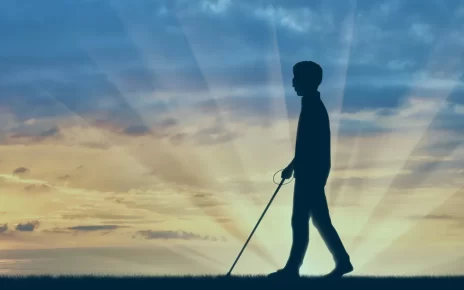You know that feeling when you’ve been scrolling through your phone late at night, and suddenly, sleep feels miles away? Well, it’s not just your brain being stubborn—it’s science. The blue light from your screen is messing with your internal clock. And honestly? It’s doing more than just keeping you awake.
What Exactly Is Blue Light?
Blue light is part of the visible light spectrum—the kind our eyes can actually see. It’s got a short wavelength, which means it packs a lot of energy. Natural sunlight contains blue light, and that’s fine—great, even. It helps regulate our mood, alertness, and sleep-wake cycle. But here’s the deal: digital screens (phones, laptops, tablets) emit artificial blue light, and we’re soaking in it for hours on end.
How Blue Light Hijacks Your Sleep
Your body runs on a circadian rhythm, a 24-hour internal clock that tells you when to wake up and when to wind down. Light—especially blue light—plays a huge role here. When your eyes detect blue light, they send a signal to your brain: “Hey, it’s daytime! Stay alert!” This suppresses melatonin, the hormone that makes you sleepy.
Now, imagine doing this at 11 PM. Your brain gets confused. It thinks the sun’s still up, so it delays sleepiness. The result? You toss and turn, wake up groggy, and repeat the cycle the next night.
The Research Behind It
Studies show that just two hours of screen time before bed can significantly reduce melatonin levels. In fact, one Harvard study found that blue light exposure shifts circadian rhythms by twice as much as green light—delaying sleep by up to three hours. Yikes.
Eye Strain and Long-Term Damage
Sleep isn’t the only victim here. Your eyes take a beating too. Ever had that gritty, tired feeling after a long workday staring at a screen? That’s digital eye strain, and blue light’s a big contributor.
Common symptoms include:
- Dry, irritated eyes
- Blurred vision
- Headaches
- Neck and shoulder pain (from squinting or bad posture)
But the bigger concern? Research suggests prolonged blue light exposure might increase the risk of macular degeneration—a leading cause of vision loss. The retina doesn’t have great defenses against blue light, and over time, those high-energy waves could cause damage.
Who’s Most at Risk?
Pretty much everyone with a screen habit, but some groups are more vulnerable:
- Night owls – Late-night screen users disrupt melatonin production the most.
- Office workers – 8+ hours of computer use equals non-stop blue light exposure.
- Kids – Their eyes absorb more blue light than adults’, and they’re often glued to tablets.
Fighting Back: Practical Solutions
Okay, enough doom and gloom. Let’s talk fixes. You don’t have to ditch screens entirely—just use them smarter.
1. Enable Night Mode (Seriously, Do It)
Most devices have a “night shift” or “blue light filter” setting. It warms the screen’s colors, reducing blue light emission. Turn it on at least two hours before bedtime.
2. The 20-20-20 Rule
Every 20 minutes, look at something 20 feet away for 20 seconds. This gives your eyes a break and reduces strain.
3. Blue Light Glasses
They’re not a magic fix, but amber-tinted lenses can block some blue light. Useful if you’re stuck working late.
4. Dim the Lights
Lower screen brightness in the evening. Less light = less melatonin disruption.
The Bigger Picture
We’re not wired for this much artificial light. Our ancestors had firelight and starlight—not the relentless glow of notifications. Small changes can make a difference, though. Maybe it’s reading a book instead of scrolling before bed. Or taking a walk outside to reset your rhythm.
Your eyes and your sleep deserve a break. And hey, the screens aren’t going anywhere—so it’s on us to adapt.





